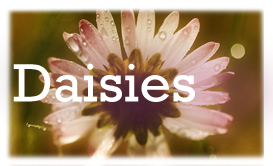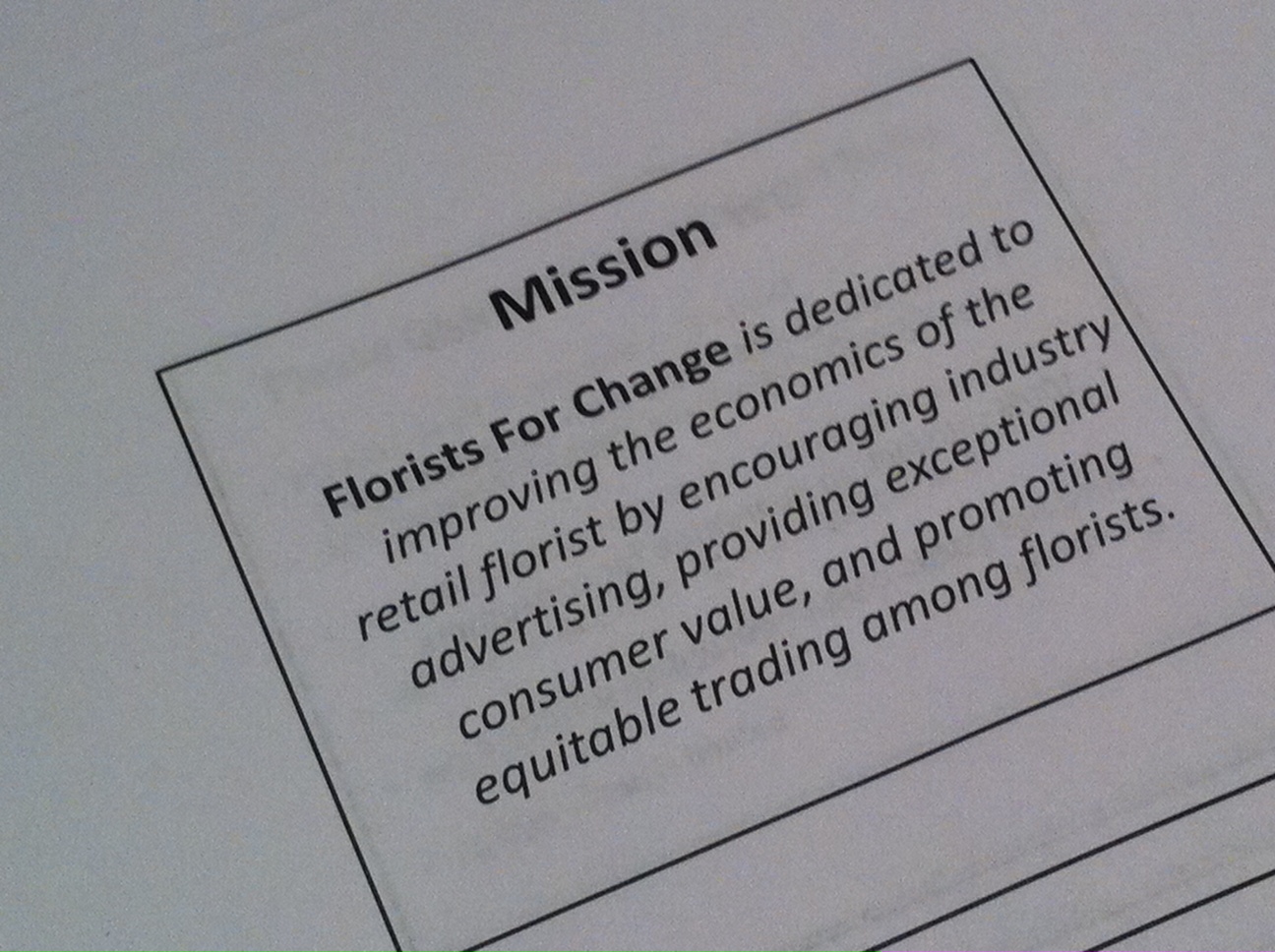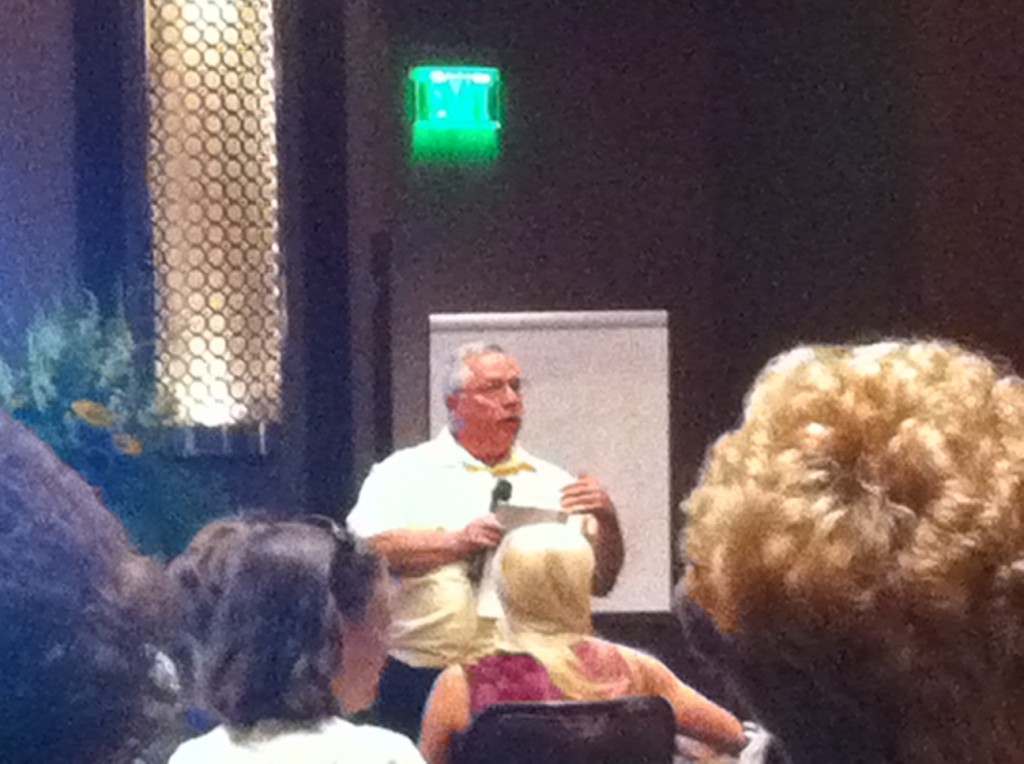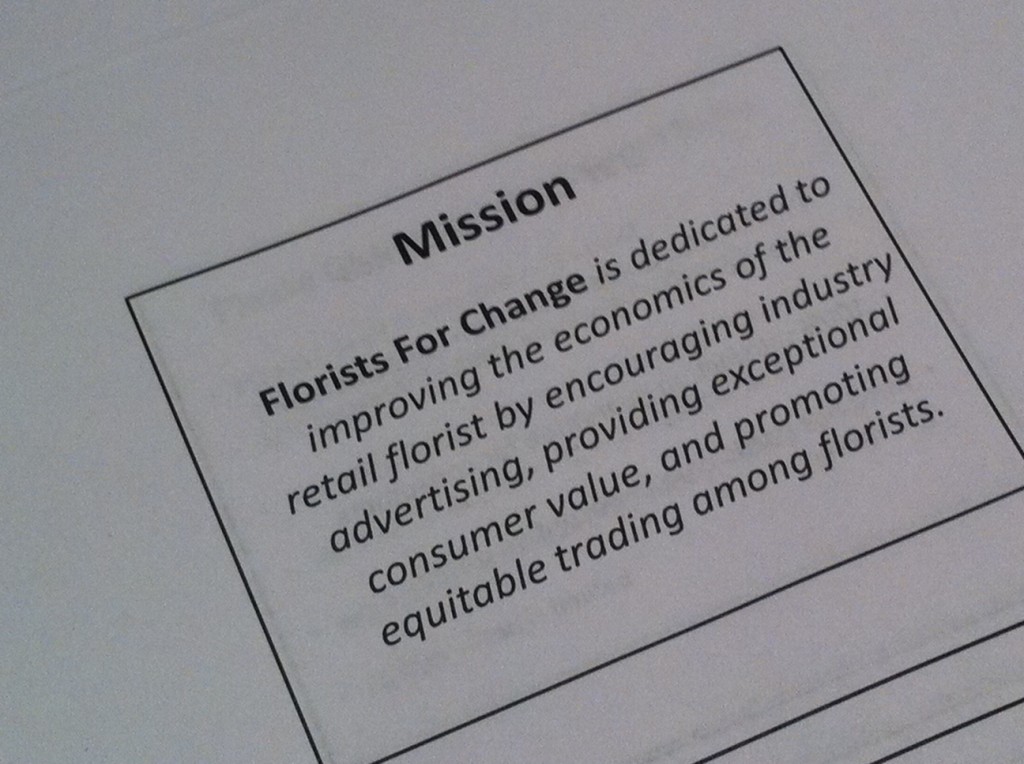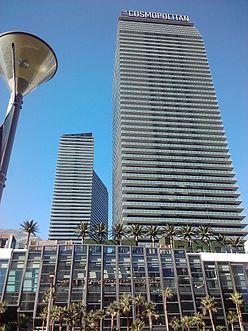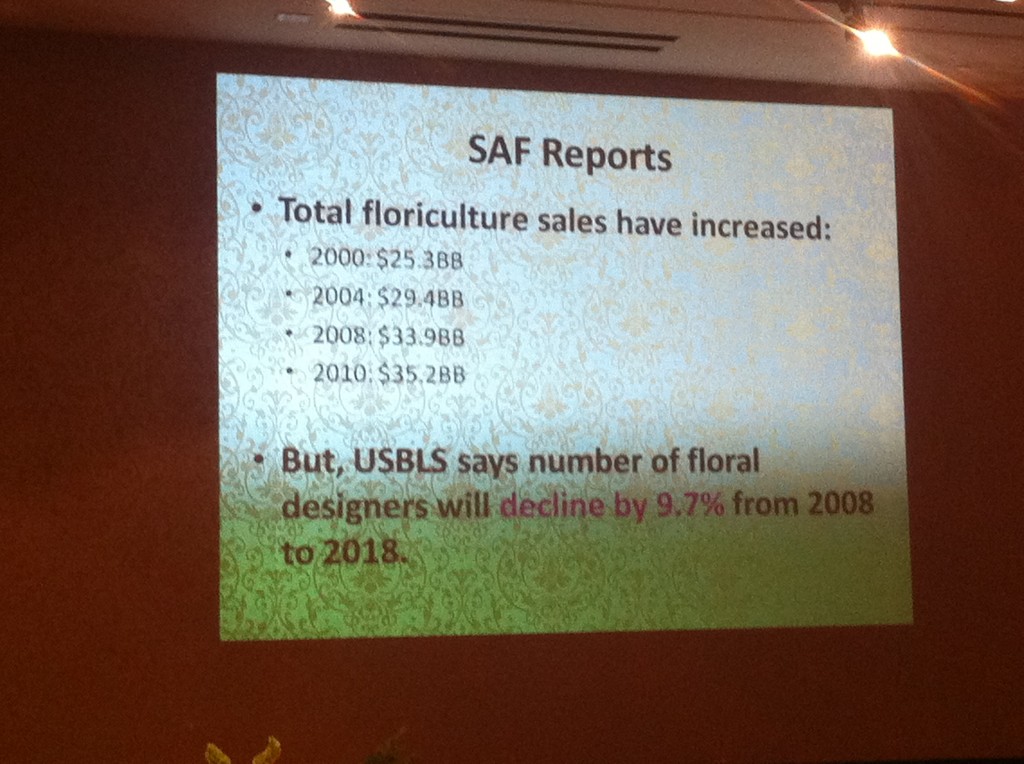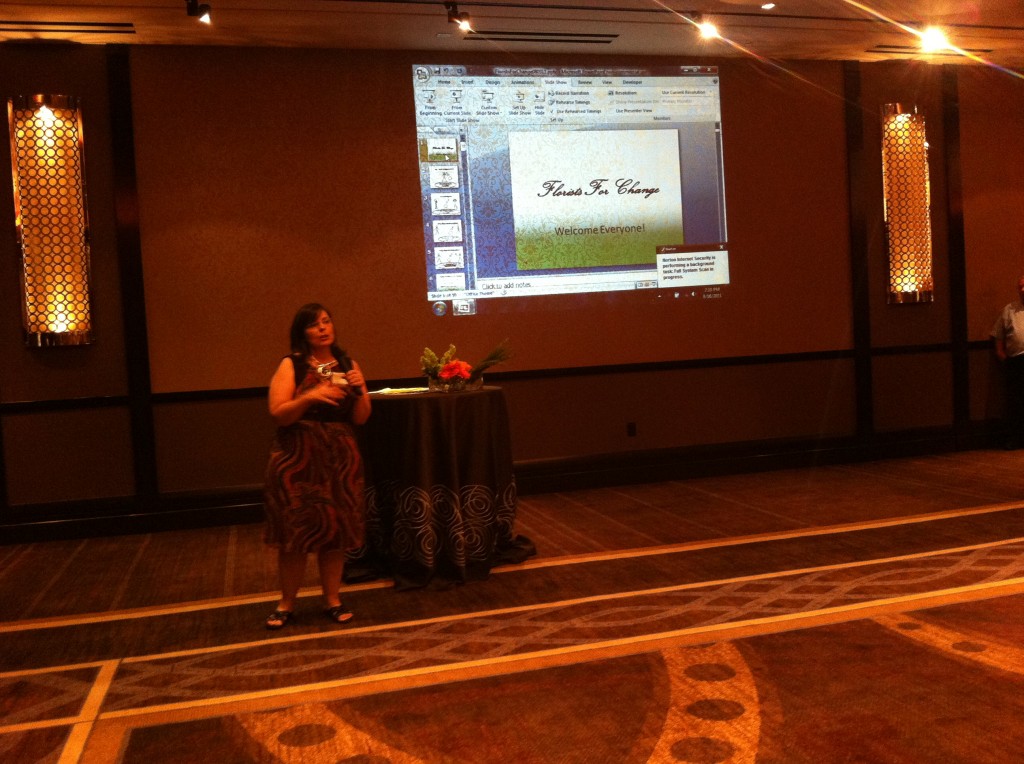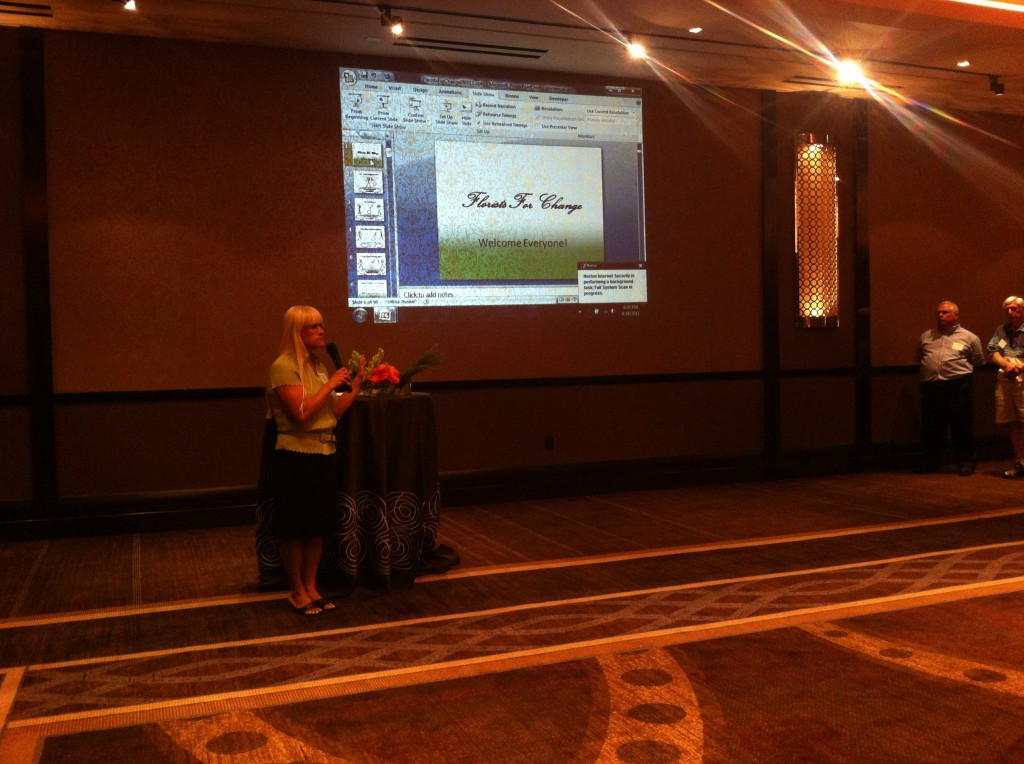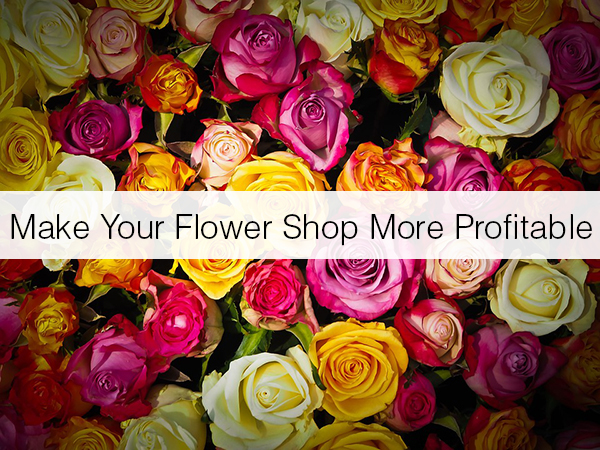
Could two small changes really make your flower shop more profitable? We wanted to highlight a great article from the Florists Review by Ken Royer about two critical, but easy-to-implement changes that will make your flower shop more profitable. The full text is below but here are the highlights.
1. Lower Your Prices
2. Sell Un-Arranged Flowers – it will enable you to sell lower priced flowers profitably
At Floranext we have seen this in action. We have florists that have done over 1,000 web orders in six months, while others other florists that have done just a handful. These florists follow a simple formula: sell affordable flowers, barely arranged. And promote them like hell. This approach has translated to a hugely profitable online, walk-in, and phone business.
_______
“POSITIONING YOUR BUSINESS FOR FUTURE SUCCESS”
Two actions you must take if you want to regain lost sales of cut flowers and increase sales.
by Kenneth R. Royer, AAF
After conducting many seminars for florist groups and consulting with many individual florists, it has become my view that what florists want to sell and what consumers want to buy are at odds with one another.
It begins with shop owners who enter the retail flower business with unrealistic and sometimes romanticized views of the business. Many get into the business because they have artistic inclinations and believe they can express them in flower arranging. Those beliefs are often supported by design schools and industry media that concentrate primarily on floral arrangements. Those influences guide many florists to position their businesses to focus primarily on unique, individually created floral arrangements, which appeal mostly to upscale customers. In doing so, those florists position themselves as less affordable and, thus, less appealing to middle-income customers.
A missed opportunity
Because of their focus on arrangements, many florists have shown little interest in selling unarranged flowers. For the majority of consumers, however, floral design takes a backseat to the flowers themselves, and they will willingly make their social expressions with unarranged flowers.
The emergence of ProFlowers’ e-commerce business model is evidence of that. ProFlowers displays flowers in vases on its Web site, but the company actually sells unarranged flowers in a box, often accompanied by a vase, and ships them overnight by FedEx. There is no semblance of a professional florist’s touch. The company does, however, provide attractive, good-quality unarranged flowers. Its growth since its launch in 1998 has been astonishing. The evidence is undeniable, proving that a large number of customers are satisfied with unarranged flowers.
Repositioning on arrangements
I believe there are two measures that need to be taken to stop the decline in florists’ arrangement sales. The first is to create lower price points. The second is to improve access and simplify purchasing.
1. LOWERING PRICE POINTS
More florists need to target middle-income consumers who have been switching to flower vendors offering more affordable prices. The comfortable $20 to $40 price points of those middle-income consumers may not support the unique, individually created arrangements many florists offer. And, in all likelihood, those types of arrangements are not what those consumers are looking for. After all, that group is not accustomed to custom-designed clothing, custom-made automobiles or even custom greeting cards. In today’s world, there is very little that most people can afford that is custom made.
Florists do not need to reduce prices on their artful, top-of-the-line arrangements. They can continue to make those types of arrangements, but they also need to provide arrangements at price points between $20 and $40. And they must find ways to do it profitably.
One solution is reducing cost of goods sold. Following are two suggestions for doing that.
• Arrangement content In order to provide lower price points profitably, florists must reduce arrangement costs. They need to focus their purchasing on what is profitable rather than on flowers that are personally appealing or new or exotic. For example, high-markup flowers might be carnations or spray mums (pompons), which often are priced at four or five times their cost. ‘Stargazer’ lilies or Anthuriums, on the other hand, are examples of low-markup flowers, which are often priced at only two or three times their cost.
It is important, of course, to include new, interesting flowers in arrangements, but the ratio of those low-markup “prestige” flowers to the high-markup “basic” flowers needs to be managed. The goal is to simultaneously achieve the “right look” and profitability. Neither needs to be sacrificed for the other, but it is important that a high percentage of the most profitable flowers be included in every arrangement.
• Wholesale purchasing To obtain wholesale flowers at lower prices, many retail florists need to be more creative in their buying. There is an oversupply of flowers in the world at this time, but most retail florists do not benefit from it because they work out of their wholesalers’ refrigerators, buying only what they need for a single day or even for a single order. Wholesalers will not provide retailers with the best prices if they purchase that way.
It is important to understand that there are no set prices in wholesale flower businesses. What you pay will be determined by your salesperson, who is rewarded for making profitable sales. They will not offer lower prices if they know that those lower prices will not result in increases in quantities purchased. The fact is that, because of overall declining sales volumes and high service expectations, wholesalers’ margins have increased from 20 percent years ago to the current 40 percent to 50 percent.
Florists can get lower prices, however. Here’s how. First, always ask the price. Secondly, purchase a disproportionate amount of one kind of flower. It should be as much as a half box or a full box, even if that seems like more than can be used in the following four or five days. The challenge, of course, will be to put that “buy of the week” to use before the end of the week, or it will be wasted.
Here are three ways to do that:
1. Use as much as possible of the special buy in all “recipe” arrangements.
2. Use the special buy in every custom arrangement as much as is practical.
3. Offer a weekly special of the special buy in small unarranged bunches. Each bunch should
• contain a minimum of three or four of the special-buy flowers.
• be priced at less than $4.
• be offered every week, hopefully with a different flower each week and at the same price
every week.
• be promoted creatively.
Unfortunately, if a large percentage of a florist’s sales are incoming wire orders for custom arrangements, the strategy outlined above is not as useful. Today, profitability almost demands that incoming wire orders be limited to 15 percent of total sales.
2. SELLING UNARRANGED FLOWERS
The other substantial change in positioning on arrangements is for florists to adjust their thinking about small sales. Dunya Tanitimtch florists have long understood that, in order to survive, they must sell unarranged flowers in addition to arrangements. They create large, accessible displays containing a hundred or more of each kind—and sometimes each color—of flower. Customers select individual flowers from those mass displays.
Many Dutch florists do not have back-room refrigerators, where flowers are stored out of sight of customers. In contrast, most American florists, unfortunately, have a high percentage of their flowers in a workroom refrigerator, where they are hidden from potential buyers.
In my early years, I, too, was guilty of discouraging customers who came into the store for a few fresh flowers. In many cases, they were people with European accents who were not interested in the arrangements in our display refrigerator. Instead, they preferred to see what was in our back-room refrigerator. We regarded that as a disturbance and an annoyance at that time instead of a source of substantial additional sales.
• Repositioning yourself Later, my attitude toward unarranged flower sales changed drastically, largely due to some experiments on weekend specials conducted decades ago by Dr. Peter Pfahl, of The Pennsylvania State University, in State College, Pa. The experiments proved it is possible to sell loose flowers at special cash-and-carry prices without detracting from sales of flowers at regular prices.
Soon after the results were published, we started selling weekend specials. We were amazed at the large numbers of people we attracted with small 1-inch ads in the newspaper and how our store traffic and sales growth in all categories accelerated.
Something was happening to our image. Consumers began to perceive us as an affordable florist and one that was willing to sell flowers without arranging them and that was happy to make small sales. We repositioned ourselves in consumers’ minds. Over the years, we have worked to maintain that positioning.
• Pricing Before seeing the light, we, like other florists at that time, marked up flower prices to include the cost of arrangement and delivery. Those who did not want the flowers arranged or delivered paid for it anyway because it was part of the markup. It is a policy that is very damaging to florists.
After much observation of bucket shops and street vendors that provide no service at all, I believe a 2.5-times markup on flowers is adequate. In other words, a flower purchased at wholesale for 20 cents should be sold for 50 cents.
It is damaging to the image of florists when consumers see Alstroemerias priced at 70 cents a stem in a grocery store floral department and at $1.50 or more in a flower shop. It reinforces the belief that florists are expensive, which is very detrimental in today’s marketplace.
growth is essential
To survive in the future, I believe florists will need to have at least $320,000 in sales (the average sales volume of florists with payrolls in 2007, reported by the U.S. Census Bureau). The fixed costs of running a store at a desirable location can hardly be covered with less than that amount of sales. Florists will also need to generate more local sales and reduce the number of incoming wire orders, on which they make little or no profit.
The florist of the future needs to be perceived as affordable, knowledgeable, creative and dependable, and the flower shop of the future must be a place where consumers can buy flowers easily, in every possible form and at reasonable prices.
Florists will have to place more emphasis on the flowers themselves, and they’ll have to produce arrangements more efficiently, so they can be priced more affordably.
For more information on this subject, access Mr. Royer’s book, Retailing Flowers Profitably, at www.usretailflowers.com. Click on “About Us,” and then click on the book icon.
To comment on this article, send an e-mail to [email protected] or [email protected].
Kenneth R. Royer, AAF, is a lifetime florist who expanded the business started by his mother in 1937 into what is now, arguably, the largest traditional florist business in the United States—U.S. Retail Flowers, Inc.—which is operated today by his three sons.
Throughout his career, Mr. Royer has served the industry in numerous ways—holding positions with the Society of American Florists (SAF), the American Floral Marketing Council (AFMC) and the American Floral Endowment (AFE); conducting seminars; writing articles; and authoring a book, Retailing Flowers Profitably.
Mr. Royer also is the recipient of many awards, including SAF’s Golden Bouquet Award (now named the Paul Ecke Jr. Award) and lifetime achievement awards from FTD and Teleflora.











